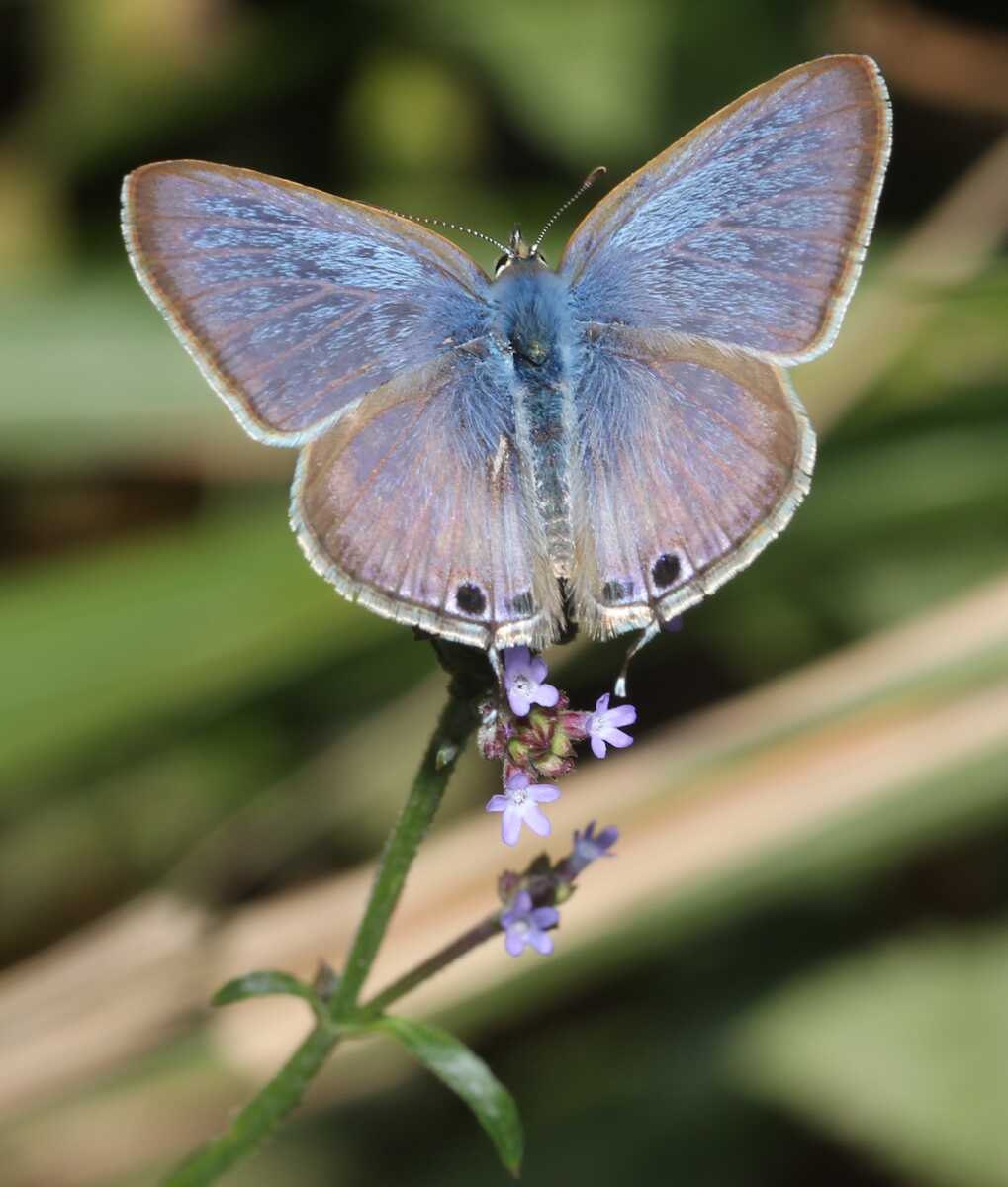There are heaps of interesting butterfly species residing in Central Australia. If lucky, one of them can colourise your day in the desert.
Also known as the dainty swallowtail or the small citrus butterfly, this species (Papilio anactus) is endemic to Australia. It's not a poisonous species but impersonates the poisonous clearwing swallowtail (Cressida cressida). Learn more at https://en.wikipedia.org/wiki/Papilio_anactus
Photo by Tom Tarrant (CC BY-SA 3.0)
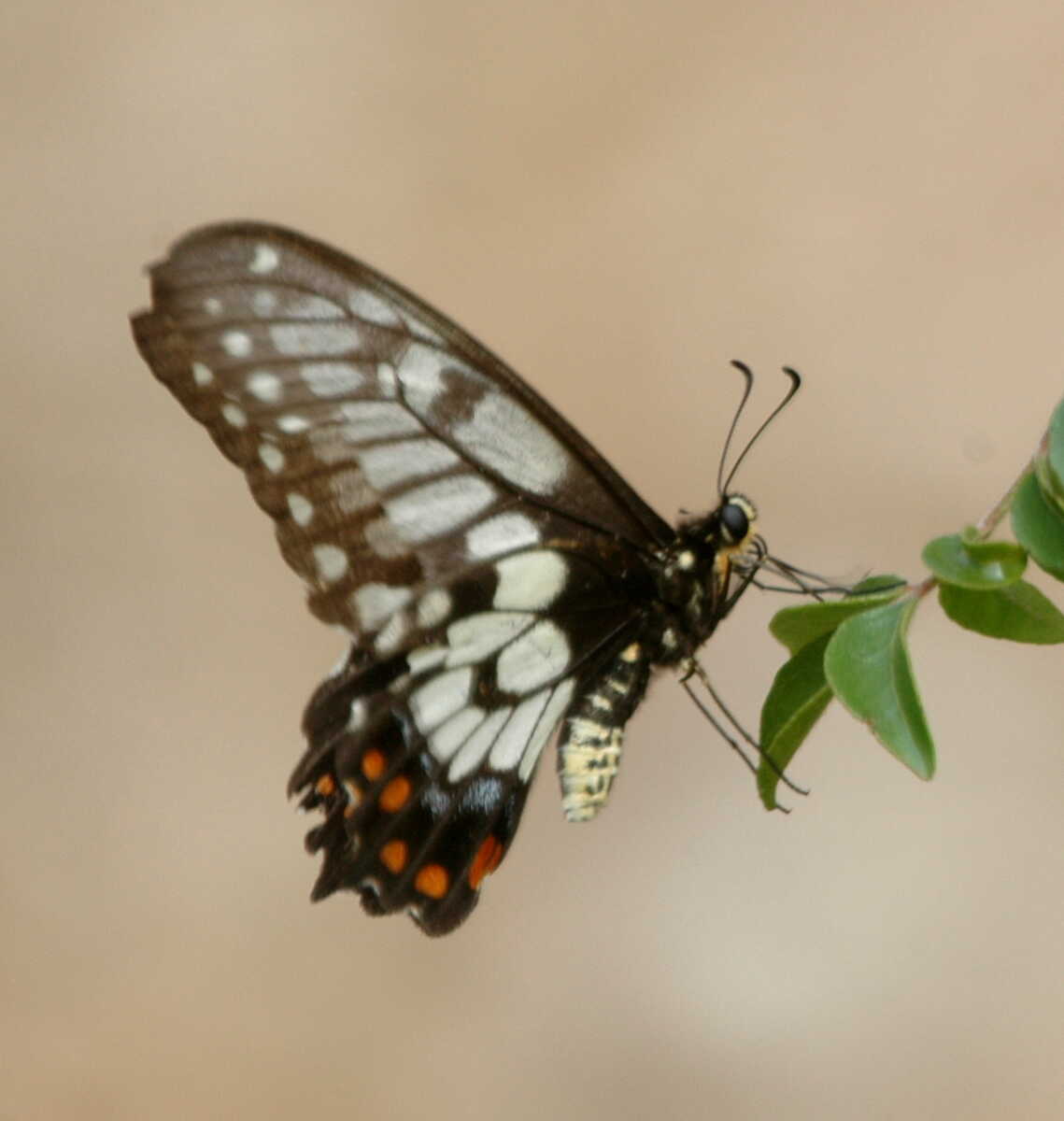
This species (Papilio demoleus) may be the most common swallowtail in the whole world. It is also called the lime butterfly, lemon butterfly and lime swallowtail. Its wingspan is around 90 millimetres and it has heaps of spots on the wing. Learn more at https://en.wikipedia.org/wiki/Papilio_demoleus
Photo by Jeevan Jose (CC BY-SA 4.0)
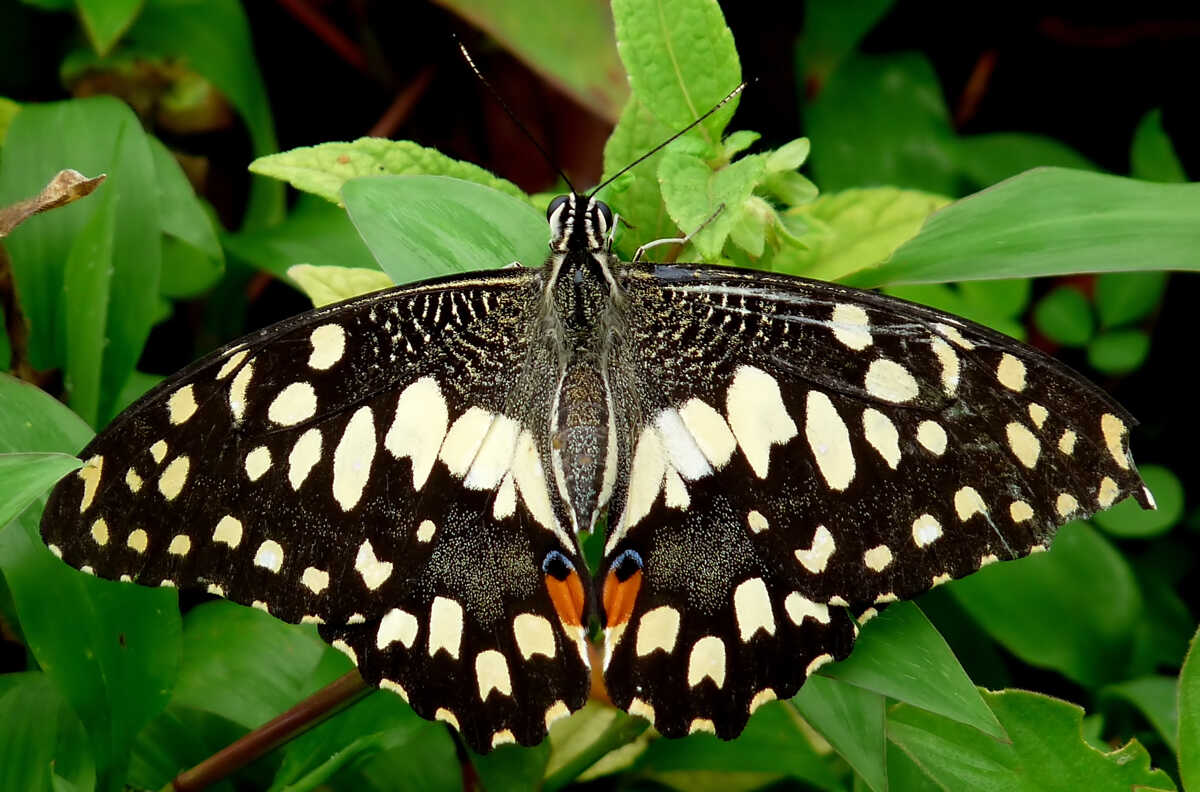
(Catopsilia pyranthe) The pale form of this species is quite common to see, yet the dark form is hard to come across. It takes around 25 days for an egg to become a full-fledged adult, and this means that there can potentially be 12 generations in a year. Learn more at https://sabutterflies.org.au/pier/pyranthe.html
Photo by Dr. Raju Kasambe (CC BY-SA 4.0)
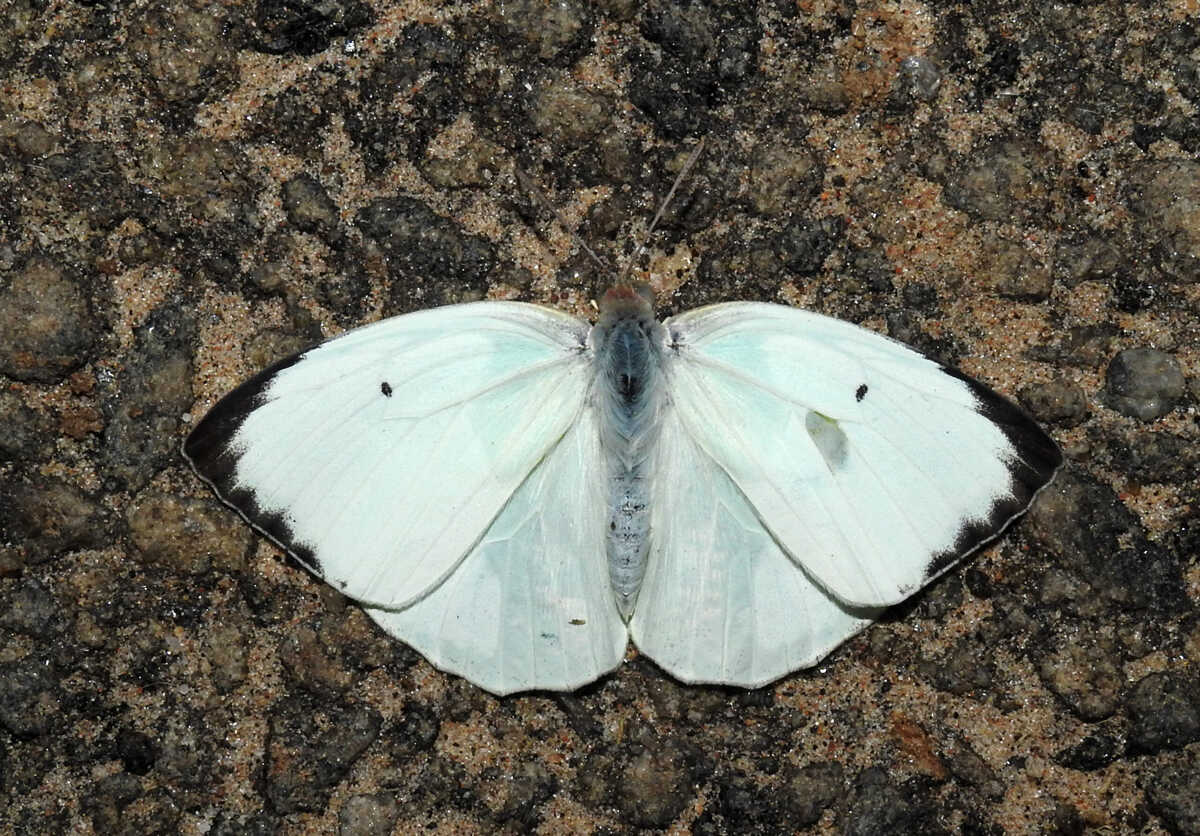
This species (Catopsilia pomona) is known for its migration tendencies and therefore was named the lemon migrant. It has different morphs in Australia and those forms depend on the environment temperature and daily sunlight intake during the growth period. Learn more at https://en.wikipedia.org/wiki/Catopsilia_pomona
Photo by Rison Thumboor (CC BY 2.0)
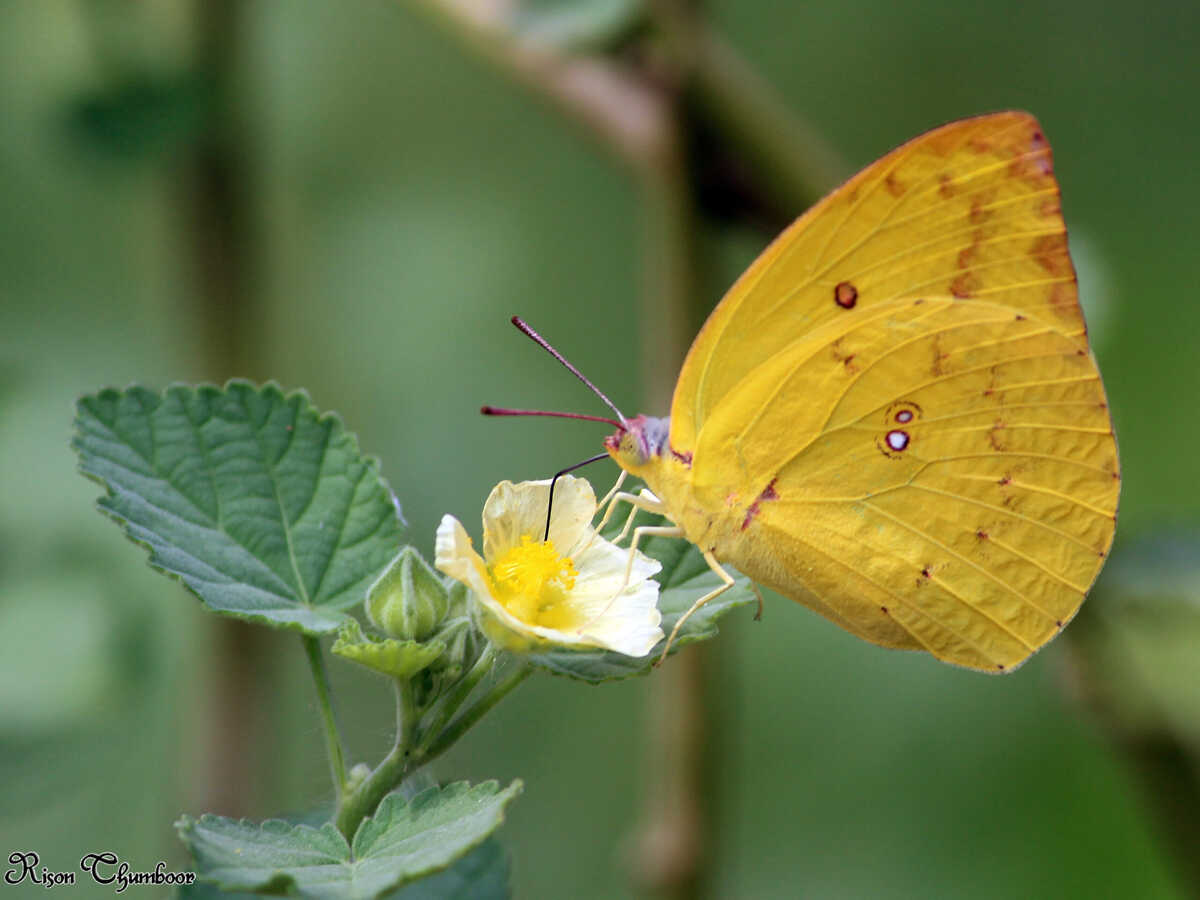
(Catopsilia scylla) Also known as the orange emigrant, the larvae of this species feed on the same plants that the white migrants feed on. The adults' wingspan is around 54 millimetres. The white eggs have a spindle shape and are typically placed singly on the leaf. The egg hatches after 2 days and a green larva comes out. Learn more at https://en.wikipedia.org/wiki/Catopsilia_scylla
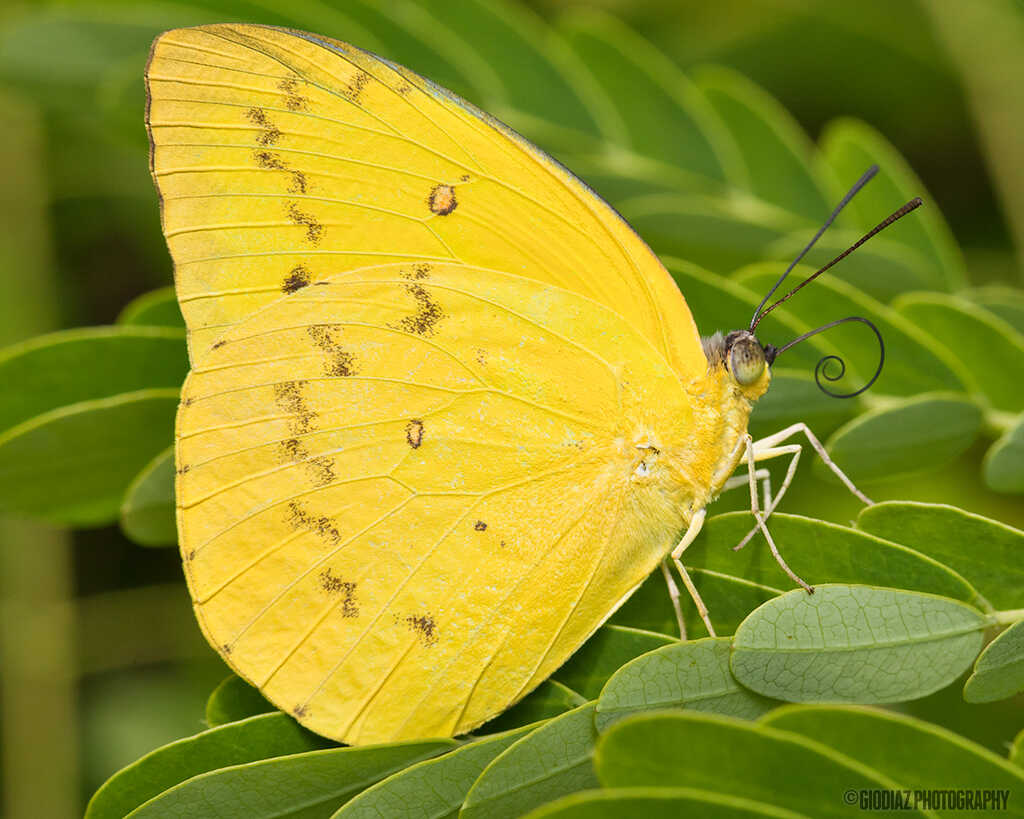
This species (Eurema smilax) has different forms depending on the season (dry or wet). It has a 30 mm wingspan and is also called the Bordered Sulphur. The dorsal sides of the wings are yellow with black edges and a black spot in the middle section. Learn more at https://bie.ala.org.au/species/urn:lsid:biodiversity.org.au:afd.taxon:a05475f3-efbb-4b3b-be1d-abcdbbccf430
Photo by Jean and Fred (CC BY 2.0)

This species (Elodina padusa) has black wingtips on the green dorsal side and grey wingtips on the underside. The larvae feed on Capparacae (plant family) and can grow up to 20 millimetres in size. The pupa is green and white and is typically located on a leaf. Learn more at https://en.wikipedia.org/wiki/Elodina_padusa
Photo by William Chapman Hewitson (Public Domain)
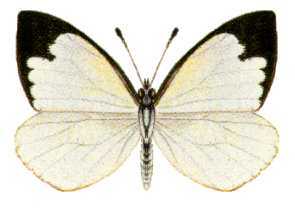
A migratory species, the caper white (Anaphaeis java) usually prefers open scrubby areas due to the feeding opportunities. The yellow/orange eggs are placed on the leaves of the host plant. Learn more at http://www.learnaboutbutterflies.com/Australia - Anaphaeis java.htm
Photo by Peter Shanks (CC BY 2.0)
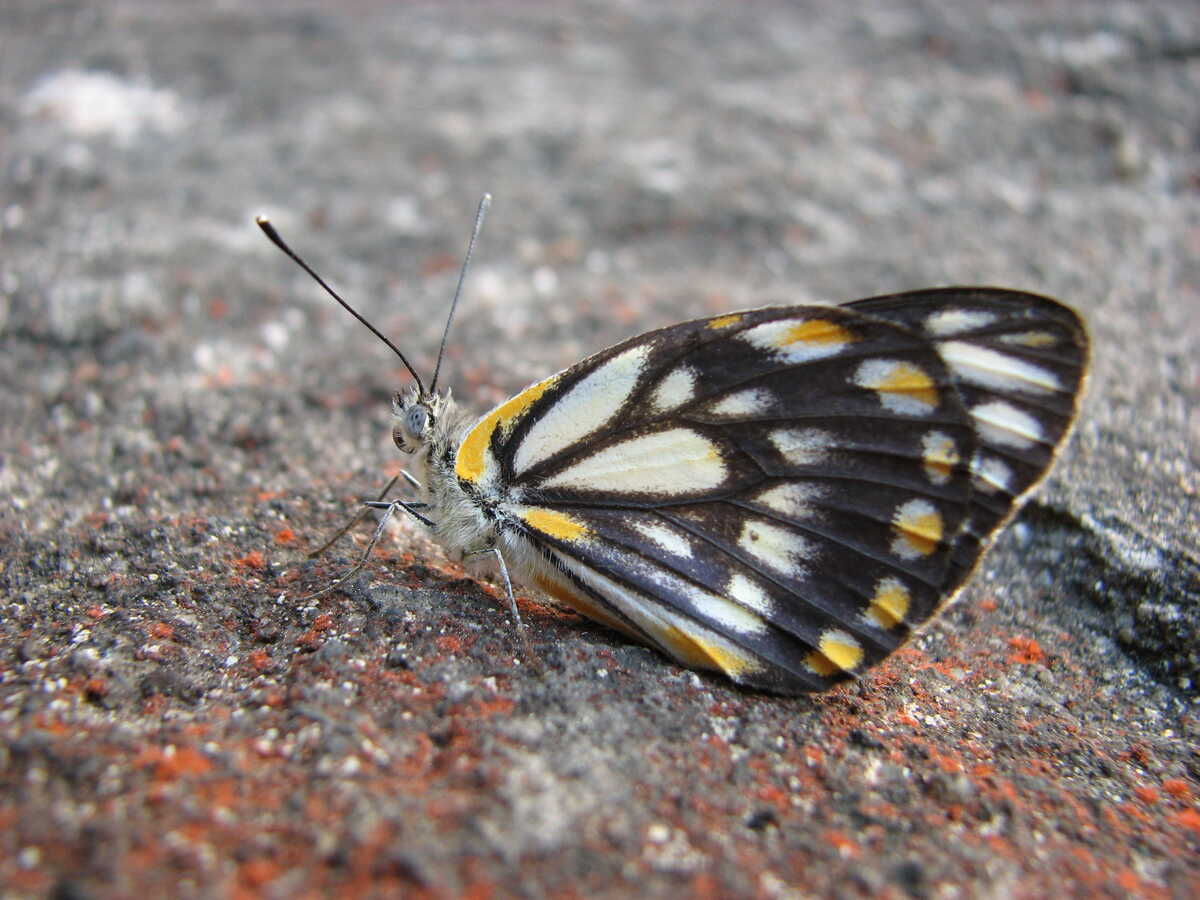
Also called Plain Tiger and the African Monarch, this species (Danaus chrysippus) can mainly be seen in open arid areas. It actually can be one of the first butterflies ever illustrated by humankind, dating back to the B.C. 1400s. Learn more at https://en.wikipedia.org/wiki/Danaus_chrysippus
Photo by Jeevan Jose - Jee & Rani Nature Photography (CC BY-SA 4.0)
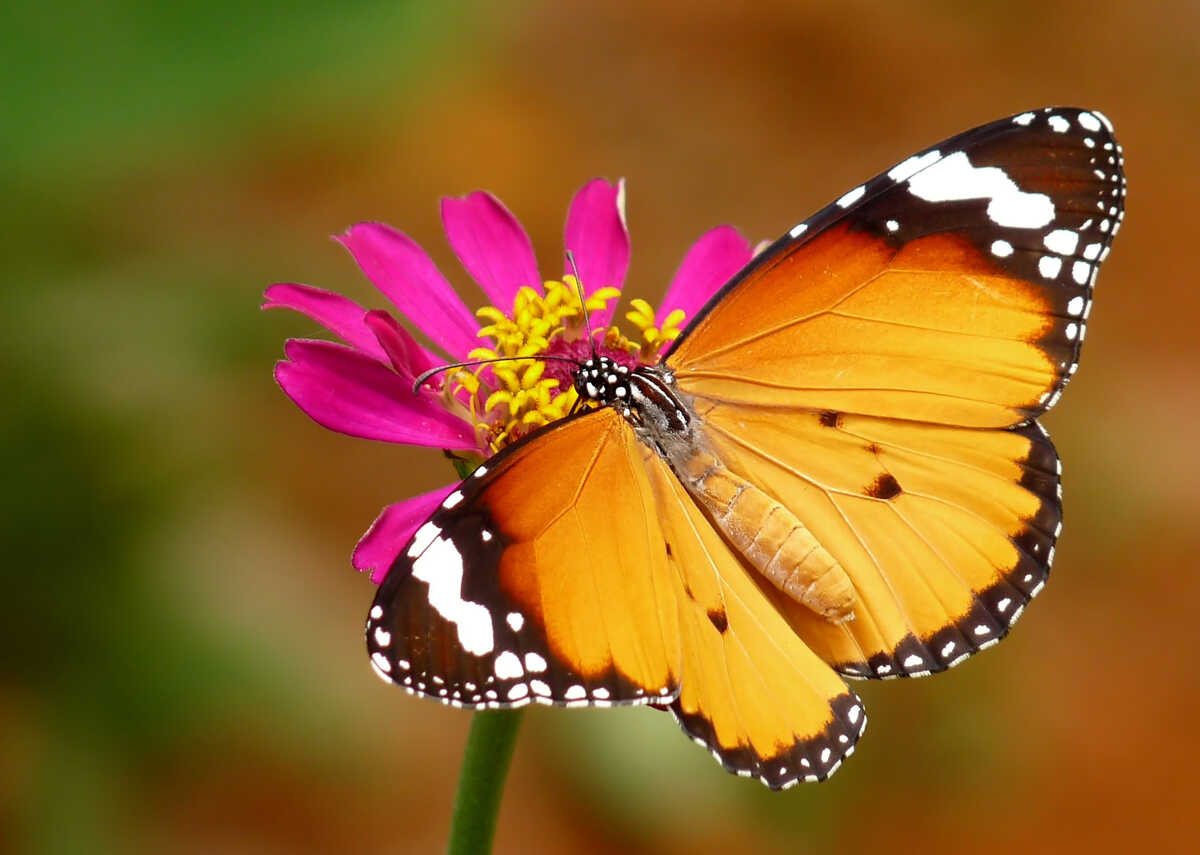
This species (Vanessa kershawi) can be seen all around the world yet it varies the most in Australia, therefore considered a separate species. They migrate southward in spring from QLD and NSW. The species live around 53 days in summer. The green eggs hatch in 3 days' time. Learn more at https://en.wikipedia.org/wiki/Australian_painted_lady
Photo by Donald Hobern (CC BY 2.0)
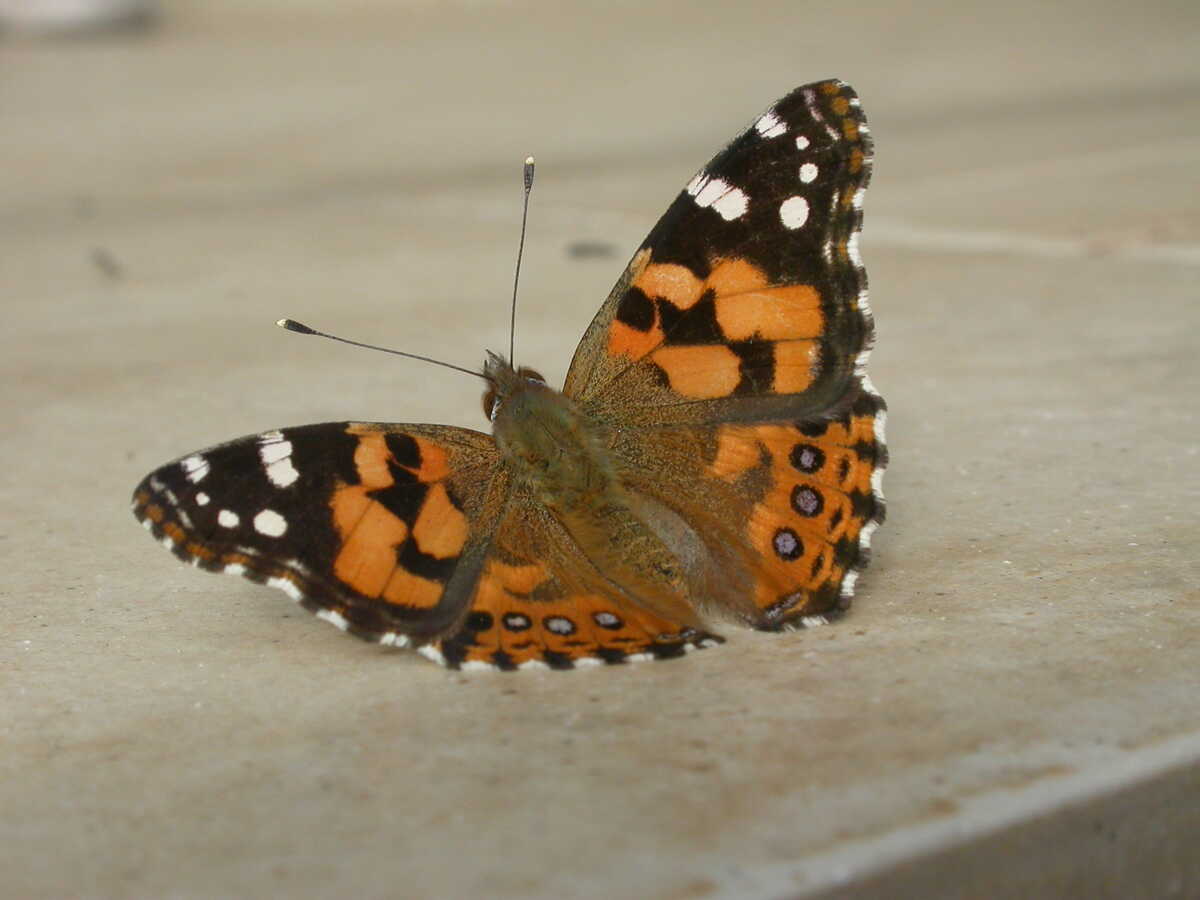
Also known as the yellow admiral, this species (Vanessa itea) fly fast and strong. Therefore, it's believed they can make it to New Zealand from Australia with the help of the wind. They can be found in open country and are known to live below an altitude of 1000 metres. Learn more at https://en.wikipedia.org/wiki/Yellow_admiral
Photo by Dean Morley (CC BY-ND 2.0)
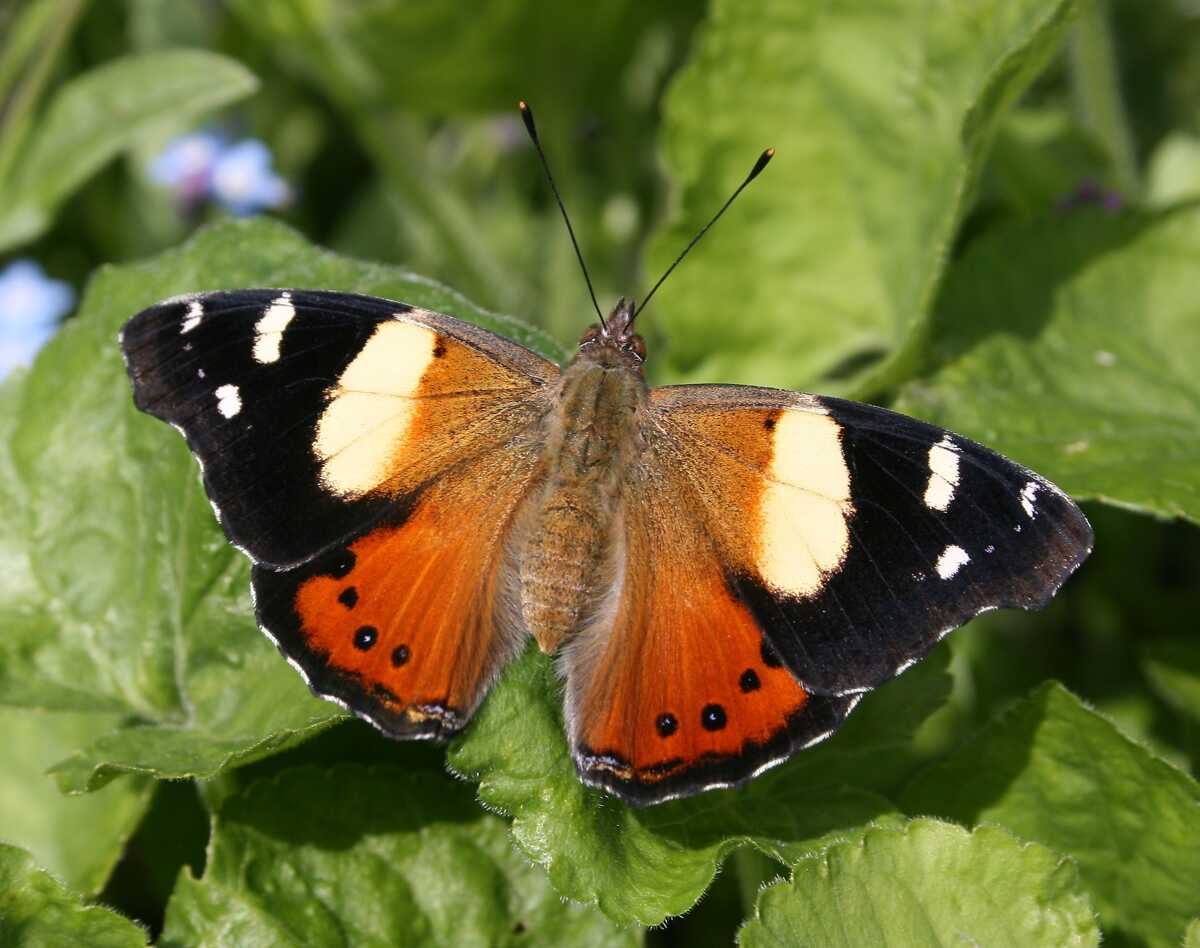
This species (Junonia villida) are called Albin's Hampstead Eye in the United Kingdom. They live in urban areas as well as woodlands and grasslands. They are hard to come across in winter and migrate north during spring. The relatively robust eggs of the species typically hatch after 8-9 days. Learn more at https://en.wikipedia.org/wiki/Meadow_argus
Photo by Jean and Fred (CC BY 2.0)
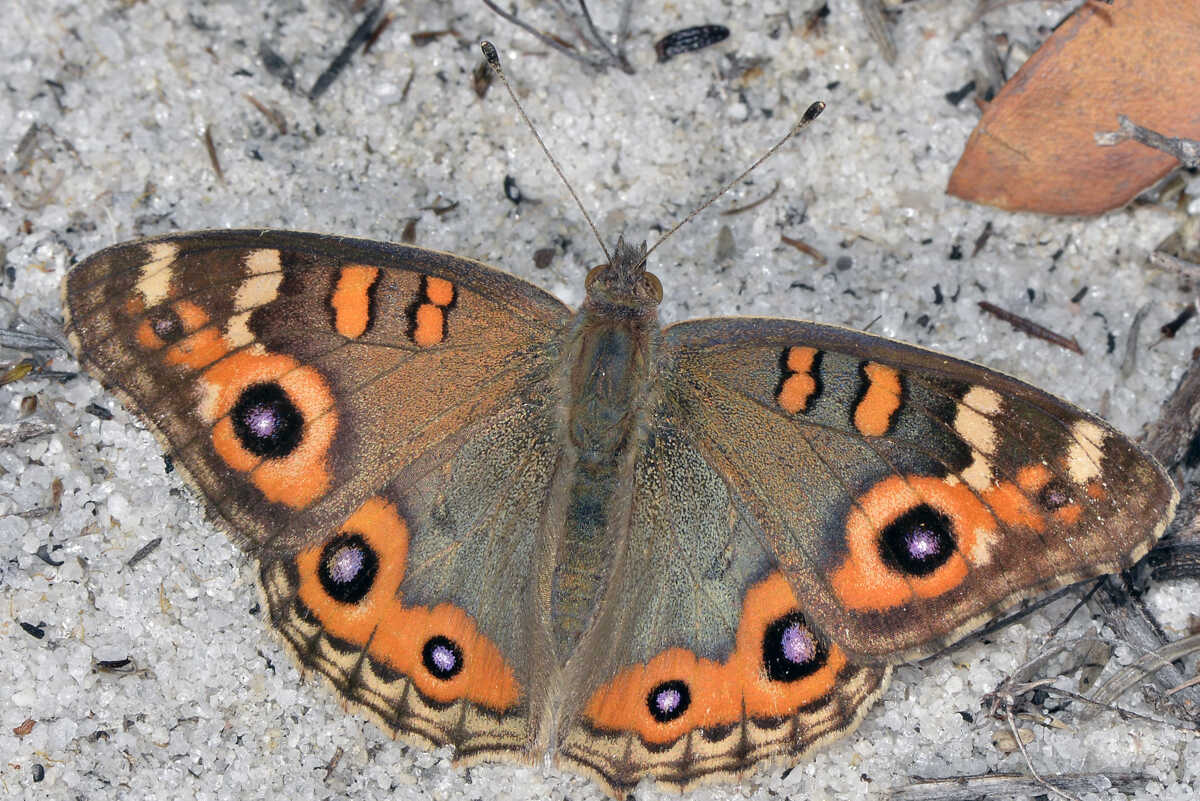
This species (Hypolimnas bolina) is called the Blue Moon Butterfly in New Zealand. It has a black body with 2 vivid blue dots on the lower back. Females & males of this species are usually sexually dimorphic, meaning they are not bound to their genital organs and default roles. Learn more at https://en.wikipedia.org/wiki/Hypolimnas_bolina
Photo by Comacontrol (Public Domain)

Also known as the (Australian) glasswing, this species (Acraea andromacha) has a wingspan of 60 millimetres. It prefers arid and less dense parts of the forest below 1000 metres of altitude. The yellow eggs are placed on the stems of the host plants. Learn more at https://www.learnaboutbutterflies.com/Australia - Acraea andromacha.htm
Photo by CSIRO (Public Domain)
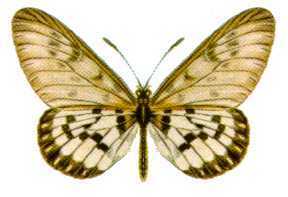
Also known as the Amethyst Hairstreak, this species (Jalmenus icilius) has a wingspan of around 30 millimetres. The round, blue eggs have a diameter of 0.5 mm. Interestingly, the caterpillars of this species are attended by ants. So, don't go crazy if you see an ant riding them. Learn more at https://en.wikipedia.org/wiki/Jalmenus_icilius
Photo by CSIRO (Public Domain)
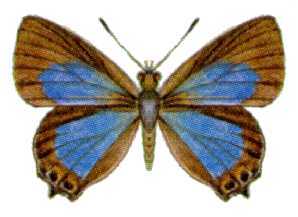
Also known as the Satin Azure, this species (Ogyris amaryllis) has a wingspan of 35 millimetres. Adult members have blue wings (upperside) with black edges. Those black edges are much thicker on females. Their eggs are placed on the stems of plants, generally in small clusters. Learn more at https://sabutterflies.org.au/lyca/amaryllis.html
Photo by CSIRO (Public Domain)
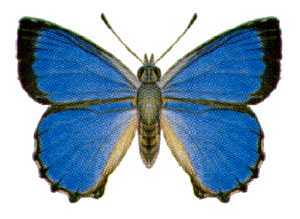
Also known as the grass blue or the clover blue, this species (Zizina labradus) has purply blue uppersides and a black body. It doesn't fly fast or strong and therefore is usually near the ground. The eggs of this species are either white or a desaturated blue. Learn more at https://en.wikipedia.org/wiki/Zizina_labradus
Photo by Gail Hampshire (CC BY 2.0)
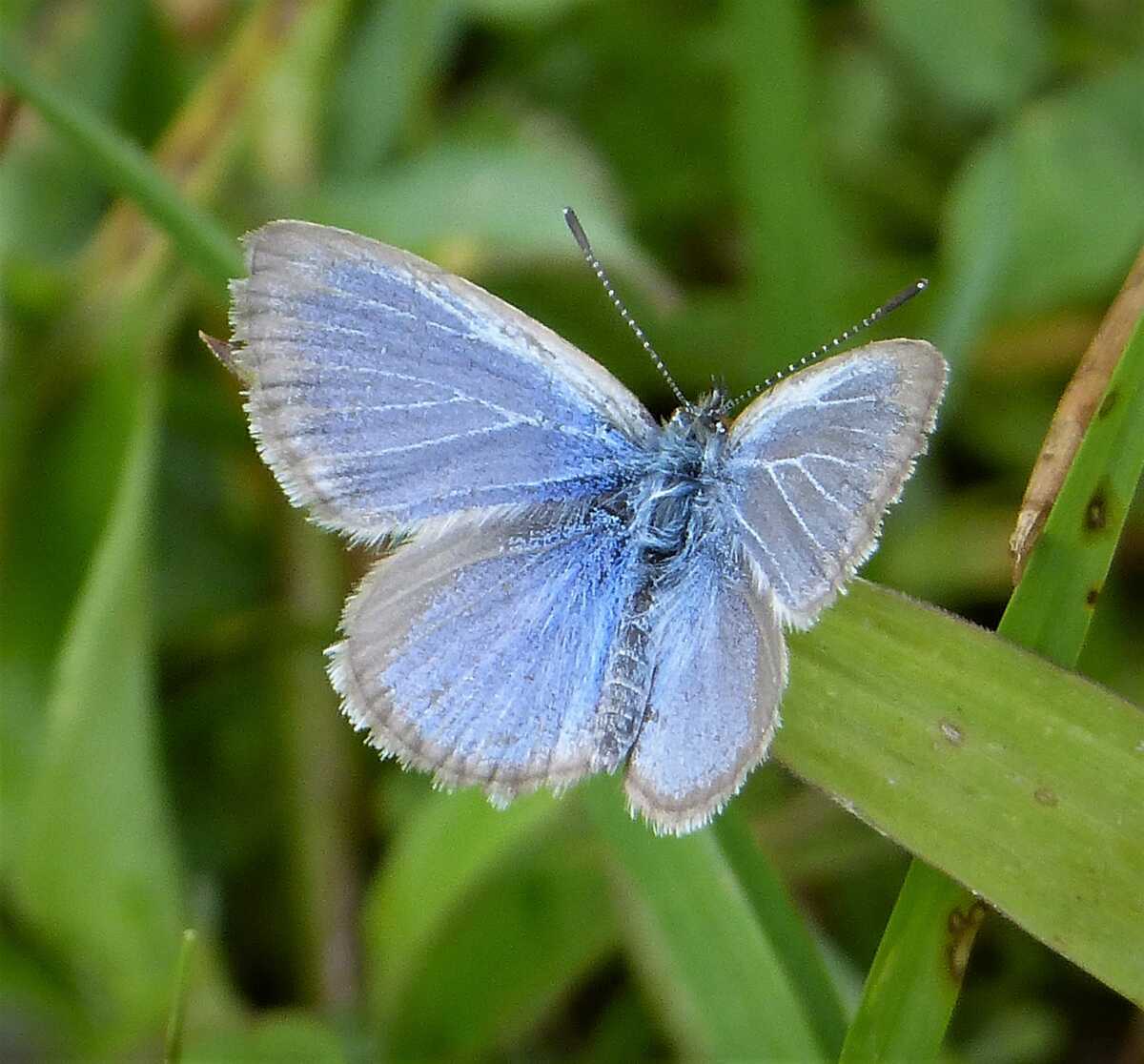
Also known as the long-tailed blue, this species (Lampides boeticus) gets its Latin name from the Baetica province of the Roman Empire. It usually lives on the edges of forests and mountain meadows below the altitude of 2700 metres. This particular species is able to have three generations in one year. Learn more at https://en.wikipedia.org/wiki/Lampides_boeticus
Photo by Alpsdake (CC BY-SA 3.0)
